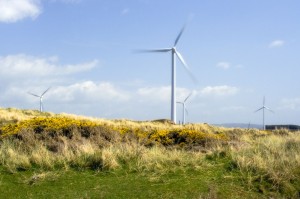As I write this post, the Midwest and northern states are in the grip of a deep freeze. Temperatures are extremely low, and when wind chill is added in, it’s barely possible to set foot outside.
But if you are like me, you still need to get to work. For most of the country, that means driving—at least a little, if not an hour-plus commute each way. So why not make your vehicle efficient? We’ve been advising you on ways to make the home more energy smart, so let’s talk about your car for a moment.
One of the best ways to be energy smart with your car is also one of the wisest: drive sensibly. Aggressive driving wastes gas. Jackrabbit starts, sudden stops and herky-jerky speeding up and slowing down can lower your mileage as much as 33 percent. If you like paying a third more per gallon, by all means… but it’s safer for you and everyone around you to be a careful, sensible driver. Now you have one more reason!
Second: Observe the speed limit. Gas mileage decreases once you pass 60 mph; if you’re going 100+ on a back road, you’re probably getting as good gas mileage as an Army tank. Every five miles per hour over sixty is like paying a quarter per gallon more for gas (according to fueleconomy.gov). Slowing down in cold weather is also much safer. You don’t want to find yourself crossing black ice at high speeds.
One tip we often give—reduce the weight in your car—is not one I’d recommend during the winter. Having some extra weight in the trunk of your car keeps the rear tires (even now, the ones that most often propel the car) firmly on the road. You might lose a bit in terms of gas mileage (something like two or three percent for every 100 lbs.), but the safety trade off in weather like this can be worth it.
Okay, going completely off the efficiency map for a moment, remember to keep emergency supplies in your car. You should have:
• a jack and a spare tire (always!)
• a blanket (or two)
• road flares
• a gallon or two of water
• a first aid kit
• maybe even a spare coat or two.
A car cell phone charger is also a very good idea, as is extra anti-freeze or even a small bag of rock salt (to de-ice the road near your car). Having these things on hand can mean survival, if your car goes off the road in blizzard conditions. As the Boy Scouts say: Be Prepared.
Drive safe, keep an eye on the weather, and see you back here soon!
Drew Bittner is a former Presidential Management Intern (PMI) and the Web content manager for EERE’s corporate Web pages.


